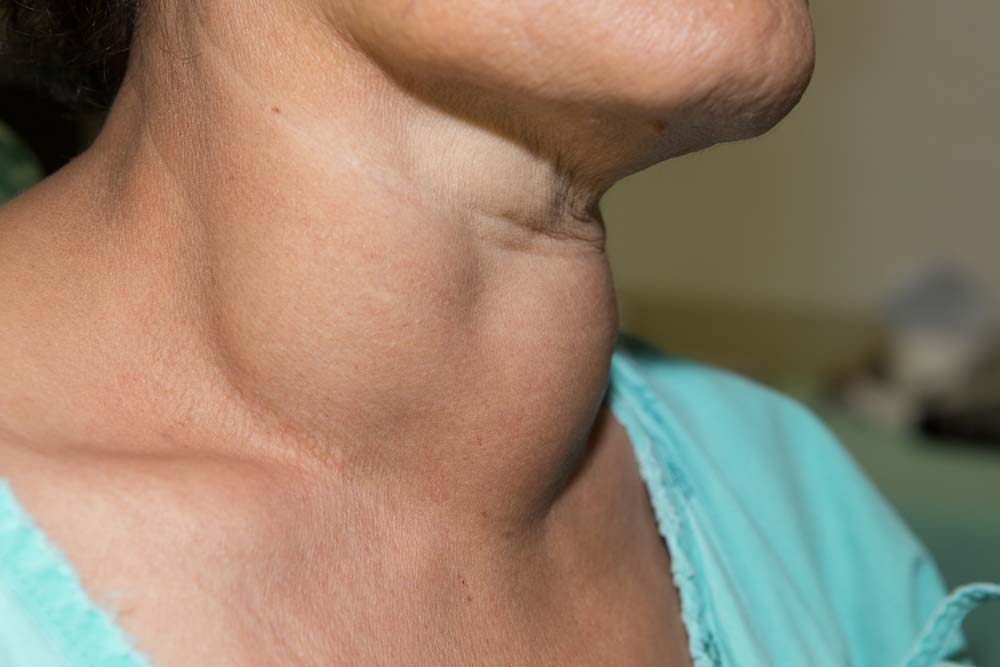The thyroid is an endocrine gland located in the region of the neck, in front of the trachea, and below the thyroid cartilage. It has two lobes, and sometimes there’s a pyramidal lobe as well. The lobes are joined by a central isthmus. The function of the thyroid is to produce tetraiodothyronine (T4) and triiodo thyroxine (T3) in response to the thyroid-stimulating hormone (TSH) from the anterior lobe of the pituitary gland.
The thyroid gland also produces calcitonin from its parafollicular cells, also known as C cells. The thyroid contains stroma, follicles (the functional unit of the thyroid gland, also known as thyrocytes), and C cells. The latter is where the majority of neoplasms arise. The thyroid gland can give rise to different tumors, ranging from benign, slightly aggressive, or very aggressive malignant tumors. Benign tumors are more prevalent than malignant forms, which account for less than 1% of the solitary nodules of the thyroid gland.
Solitary nodules may be neoplastic or non-neoplastic. But keep in mind that neoplasms of the thyroid have a single solitary nodule, rather than multiple nodules. Benign tumors of the thyroid gland are called adenomas. They are derived from the cuboidal epithelial cells of the follicles. As such, they can be toxic, which means they produce thyroid hormones or non-toxic when they are nonfunctional. Carcinomas of the thyroid include those that arise from the follicular cells, including papillary carcinoma, follicular carcinoma, anaplastic carcinoma (undifferentiated), and those that arise from parafollicular cells, including medullary carcinoma.
Benign neoplasm, or adenomas, may be due to radiation exposure. They cause somatic mutations, especially the mutation of the TSH receptor. This TSH is the thyroid-stimulating hormone, which comes from the pituitary gland. Any mutation will cause a dysfunction in the pituitary growth. Another less common mutation allows TSH-independent hyperproliferation of the thyroid gland and hypersecretion of T3 and T4.
Carcinomas of thyroid follicular cells are associated with genetic and environmental factors, especially radiation exposure and severe iodine deficiency (follicular carcinoma). The carcinoma of C cells is associated with hereditary mutations.
Tumors of the thyroid gland usually have the following clinical features:
Age and sex of patients
Papillary carcinoma is seen in all age groups, but it is more common during childhood and in young adults. They are 3 times more common in women than in men. The prevalence of follicular carcinomas is higher in women as compared to men, and their incidence peaks in the 5th and 7th decade of life. Anaplastic carcinomas are seen in seniors, mostly between 60 to 80 years, with a mean incidental age of 65 years, affecting females more than males. Sporadic medullary carcinomas are seen mostly in the 5th and 6th decade of life, while inherited cases appear earlier in young adults in the 3rd and 4th decade of life.


